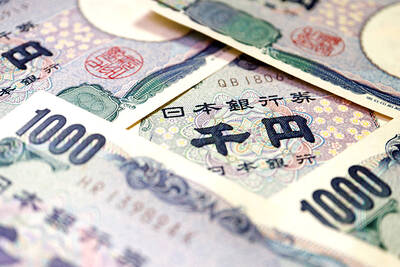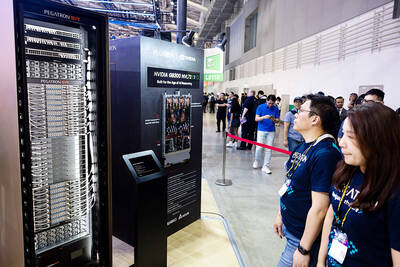With European and US cities under lockdown due to the COVID-19 pandemic, Taiwan’s two major bicycle makers, Giant Manufacturing Co Ltd (巨大機械) and Merida Industry Co Ltd (美利達), face huge uncertainties for shipments in the short term, Yuanta Securities Investment Consulting Co (元大投顧) said last week.
“As 57 percent of Giant’s sales were generated by the EU and US markets last year, we expect shutdowns in EU and US cities this month and last month due to the COVID-19 outbreak to affect Giant’s sales and gross margin in the first half of this year,” Yuanta analyst Peggy Shih (施姵帆) said in a note on Tuesday.
“Additionally, the increasing inventory of this year’s bike models in the first half of the year would likely defer shipments of next year’s models to the second half this year,” Shih said.
As for Merida, “up to 81 percent of its sales for last year were from EU and US markets, higher than Giant’s 57 percent, and these markets are likely to see greater impact from COVID-19 due to city shutdowns in the short term,” Shih said in a separate note on Wednesday.
Up to 70 percent of Giant’s manufacturing capacity is in China, and as its work resumption rate there last month recovered to as high as 90 percent, it faces no materials or logistical issues, Shih said.
In comparison, Merida might face a component shortage issue due to virus-related disruptions in Japan and ASEAN markets, she said.
Based on Yuanta’s estimates, Giant’s revenue for this year is forecast to decline 7.2 percent year-on-year to NT$58.89 billion (US$1.94 billion), and its gross margin could fall to 20.9 percent, from 21.5 percent a year earlier, while Merida’s revenue might drop 5.6 percent to NT$26.68 billion and gross margin could fall to 12.9 percent, from 13.2 percent last year.
Last year, Giant shipped 4.16 million bicycles, down 4 percent from a year earlier.
Despite an 11 percent annual decline in traditional bike shipments to EU and US markets, it posted stable shipments to China, while electric bicycle shipments grew 15 percent, Yuanta said.
Merida’s shipments last year fell 19 percent to 1.05 million units, with a 38 percent decline in traditional bike shipments to the EU and the US, but shipments to China grew 11 percent and electric bicycle shipments increased 63 percent, Yuanta added.
Last week, Giant’s board of directors approved a proposed cash dividend distribution of NT$4.6 per share, after the company reported the highest earnings per share of NT$9 in four years, with a payout ratio of 51.11 percent.
Net income rose 17.8 percent year-on-year to NT$3.37 billion last year and consolidated revenue grew 5.3 percent to NT$63.45 billion, company data showed.
Merida also approved a proposed cash dividend distribution of NT$4.2 per share, based on last year’s earnings per share of NT$8.37, also its highest in four years, which suggests a payout ratio of 50.18 percent.
Its net income last year increased 46.44 percent to NT$2.5 billion, while revenue rose 9.2 percent to NT$28.24 billion, the company’s financial statement showed.
Shares in Giant and Merida this year have declined 38.26 percent and 37.68 percent to NT$131.5 and NT$110 respectively, as of Wednesday last week.

AI TALENT: No financial details were released about the deal, in which top Groq executives, including its CEO, would join Nvidia to help advance the technology Nvidia Corp has agreed to a licensing deal with artificial intelligence (AI) start-up Groq, furthering its investments in companies connected to the AI boom and gaining the right to add a new type of technology to its products. The world’s largest publicly traded company has paid for the right to use Groq’s technology and is to integrate its chip design into future products. Some of the start-up’s executives are leaving to join Nvidia to help with that effort, the companies said. Groq would continue as an independent company with a new chief executive, it said on Wednesday in a post on its Web

RESPONSE: The Japanese Ministry of Finance might have to intervene in the currency markets should the yen keep weakening toward the 160 level against the US dollar Japan’s chief currency official yesterday sent a warning on recent foreign exchange moves, after the yen weakened against the US dollar following Friday last week’s Bank of Japan (BOJ) decision. “We’re seeing one-directional, sudden moves especially after last week’s monetary policy meeting, so I’m deeply concerned,” Japanese Vice Finance Minister for International Affairs Atsushi Mimura told reporters. “We’d like to take appropriate responses against excessive moves.” The central bank on Friday raised its benchmark interest rate to the highest in 30 years, but Bank of Japan Governor Kazuo Ueda chose to keep his options open rather than bolster the yen,

Global server shipments are expected to surge to 15 million units next year, from 4 million units this year, with artificial intelligence (AI) servers accounting for about 30 percent, driven by massive capital spending by major cloud service providers, the Market Intelligence and Consulting Institute (MIC) said on Thursday last week. Major cloud service providers — including Google’s parent company Alphabet Inc, Microsoft Corp, Amazon.com Inc and Meta Platforms Inc — are projected to budget US$450 million for capital expenditure next year, up from US$400 million this year, MIC ICT [information and communications technology] Industry Research Center director Edward Lin

Even as the US is embarked on a bitter rivalry with China over the deployment of artificial intelligence (AI), Chinese technology is quietly making inroads into the US market. Despite considerable geopolitical tensions, Chinese open-source AI models are winning over a growing number of programmers and companies in the US. These are different from the closed generative AI models that have become household names — ChatGPT-maker OpenAI or Google’s Gemini — whose inner workings are fiercely protected. In contrast, “open” models offered by many Chinese rivals, from Alibaba (阿里巴巴) to DeepSeek (深度求索), allow programmers to customize parts of the software to suit their